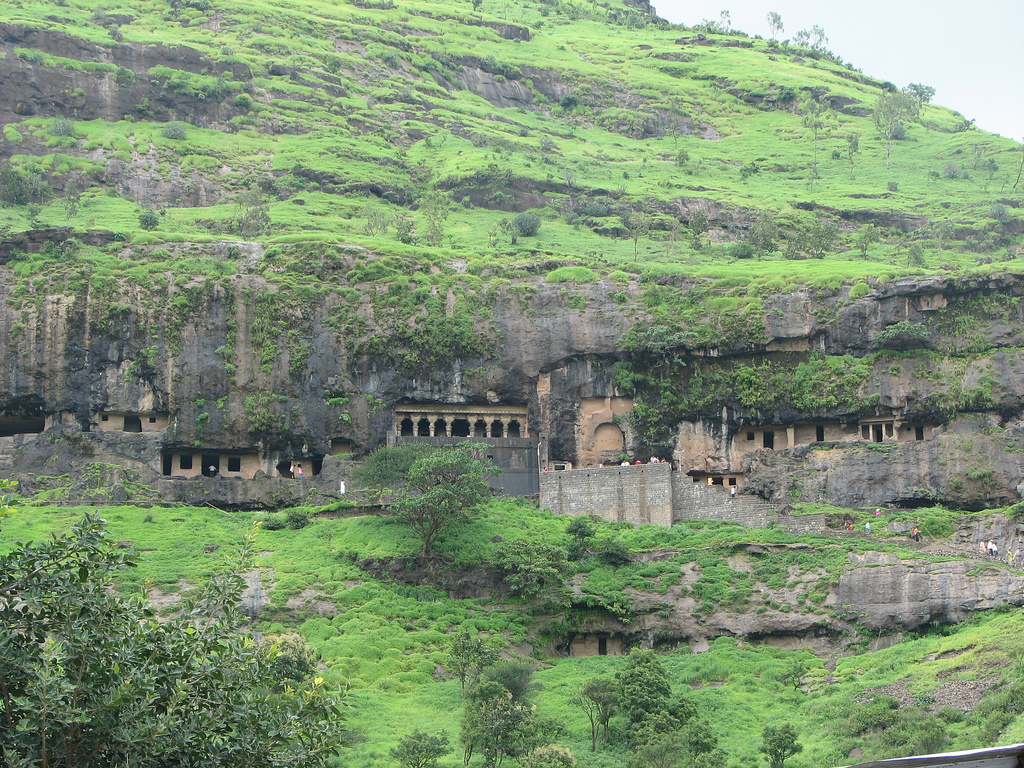Girijatmaj Temple, located in the picturesque Lenyadri hills of Maharashtra, is one of the revered Ashtavinayak Temples dedicated to Lord Ganesha. This ancient cave temple is not only a spiritual destination but also an architectural marvel, drawing thousands of devotees and history enthusiasts. Nestled in a series of Buddhist caves, Girijatmaj Temple holds immense religious significance and offers a breathtaking view of the surrounding Sahyadri mountain ranges.
In this comprehensive guide, we delve into the history, religious importance, architecture, and travel tips for visiting the Girijatmaj Temple.
History & Mythological Significance
The name ‘Girijatmaj’ is derived from two Sanskrit words – Girija (another name for Goddess Parvati) and Atmaj (meaning son). According to Hindu mythology, it is believed that Goddess Parvati performed penance at Lenyadri to please Lord Ganesha and wished for him as her son. Lord Ganesha then incarnated as Girijatmaj at this sacred site, making it an important pilgrimage center for devotees.
The temple is part of the Ashtavinayak Yatra, an eight-temple pilgrimage dedicated to Lord Ganesha. Each of these temples holds unique legends associated with the deity, and Girijatmaj Temple stands out as the only one located in a mountain cave, making it a spiritually enriching and adventurous destination.
Architectural Marvel of Girijatmaj Temple
Girijatmaj Temple is carved into the caves of Lenyadri, which were originally Buddhist rock-cut caves dating back to the 1st and 3rd centuries AD. The temple is situated in the seventh cave of the Lenyadri complex, and its structure is entirely monolithic, meaning it has been carved out of a single rock.
Unique Features of the Temple’s Architecture:
- Cave Temple Structure: Unlike other Ashtavinayak temples, Girijatmaj does not have a separate idol installation. Instead, the deity is carved on a rock wall, adding to its uniqueness.
- 18 Rock-Cut Steps: To reach the temple, devotees have to climb approximately 307 steps, offering an experience of devotion and endurance.
- No Separate Gabhara (Sanctum Sanctorum): Unlike conventional Hindu temples, this temple lacks a typical garbhagriha (inner sanctum) and is a spacious rock hall with pillars.
- Ancient Buddhist Influence: The temple still retains many features of its Buddhist origin, such as rock-cut pillars, meditation chambers, and intricate carvings.
Religious Importance of Girijatmaj Temple
- The temple is visited as part of the Ashtavinayak Yatra, a highly revered pilgrimage for devotees of Lord Ganesha.
- It is believed that worshiping Lord Girijatmaj here grants wisdom, prosperity, and removes obstacles from one’s life.
- Many devotees perform Abhishekam (ritual bathing of the idol) and special prayers to seek divine blessings.
- The temple is also a significant site during Ganesh Chaturthi, attracting thousands of pilgrims.
How to Reach Girijatmaj Temple
By Road:
- Girijatmaj Temple is located in Lenyadri, around 95 km from Pune and 160 km from Mumbai.
- Regular buses and private taxis are available from Pune and Mumbai to Junnar, the nearest town.
- From Junnar, one can hire an auto-rickshaw or taxi to reach the base of Lenyadri hills.
By Train:
- The nearest railway station is Pune Junction, which is well-connected to major cities across India.
- From Pune, one can hire a taxi or take a bus to Junnar and then proceed to Lenyadri.
By Air:
- The nearest airport is Pune International Airport (PNQ), located around 100 km from the temple.
- From the airport, one can hire a cab to Junnar and then reach the temple by road.
Best Time to Visit
The best time to visit Girijatmaj Temple is between October and March, as the weather is pleasant and ideal for climbing the steps. Avoid visiting during peak summer months (April–June) as the region experiences high temperatures.
Festivals:
- Ganesh Chaturthi is the grandest festival celebrated at the temple, with thousands of devotees gathering for special prayers and festivities.
- Magh Chaturthi (a significant day for Lord Ganesha) is another important occasion when special rituals are performed.
Accommodation & Nearby Attractions
Accommodation:
- Pilgrims can find budget hotels, lodges, and Dharamshalas in Junnar.
- Pune and Nashik offer a wider range of hotels, including luxury options for those preferring a comfortable stay.
Nearby Attractions:
- Shivneri Fort – The birthplace of Chhatrapati Shivaji Maharaj, located around 5 km from Lenyadri.
- Ozar Ganpati Temple – Another Ashtavinayak temple, just 12 km from Girijatmaj Temple.
- Naneghat Trek – A popular trekking destination for adventure enthusiasts.
- Lonavala & Khandala – Scenic hill stations around 100 km from the temple, perfect for a weekend getaway.
Travel Tips for Devotees
- Wear comfortable footwear and carry water bottles, as you will need to climb over 300 steps.
- Visit the temple early in the morning to avoid the crowd, especially on weekends and during festivals.
- Photography is allowed, but avoid disturbing the sanctity of the temple.
- Carry cash, as digital payment options may not be available at local shops.

